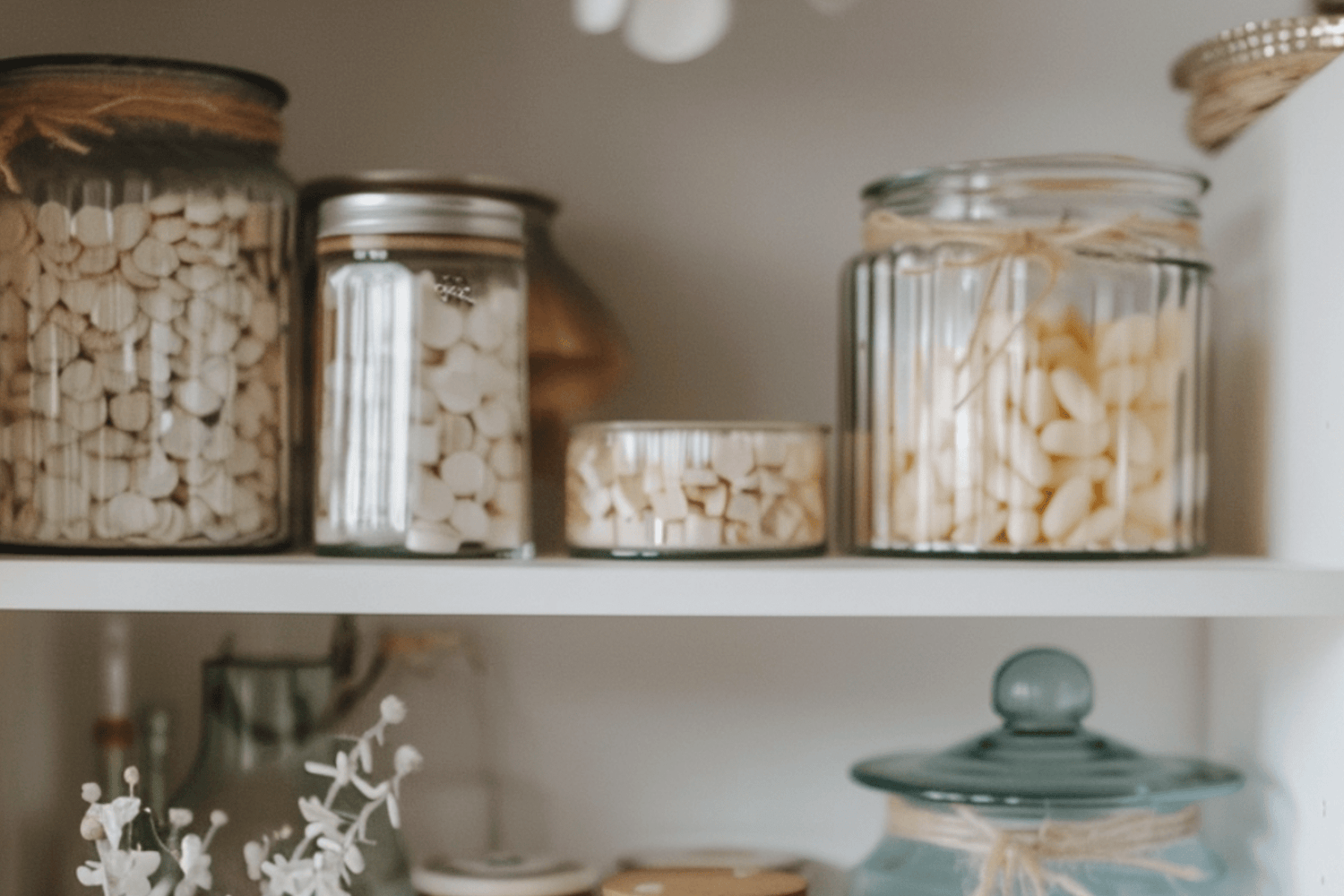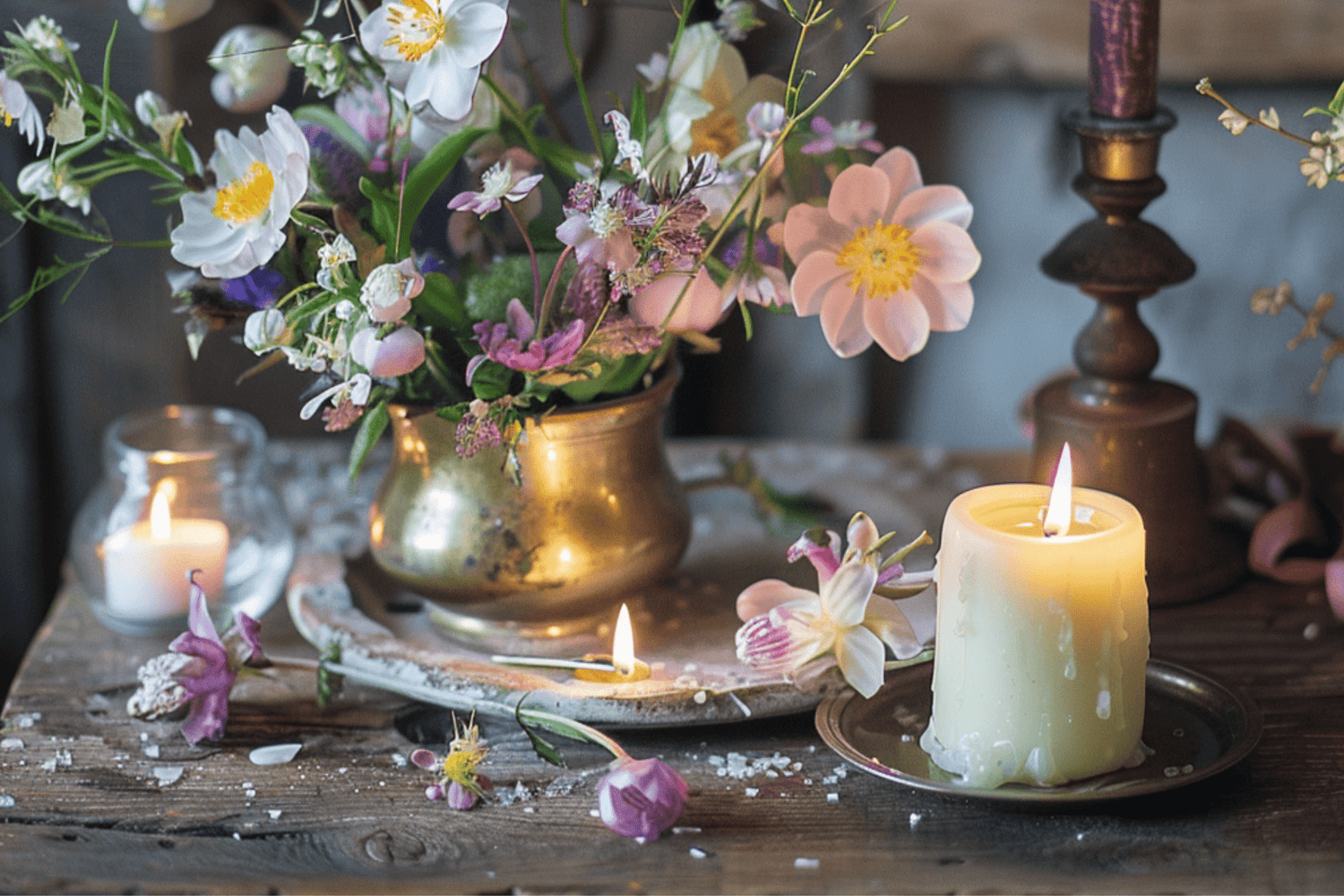Does the anxiety surrounding wick choices keep you up into the wee hours of the night? No? It must just be us, then. Whatever the case, there is much debate in the candle-making community on whether wood wicks for candles are better than cotton wicks.
Here are the pros and cons of wood wicks vs. cotton wicks.
What Are Wood Candle Wicks?
Wooden wicks are usually a shade of brown when unused and (not surprisingly) feel like wood— hard and unbendable. They are beloved for their crackle sound.
Why Do Some People Prefer Wood Wicks For Candles?
Wooden wicks are typically marketed as "crackler candles" because, when lit, they have a pleasant fireplace-esque vibe (charming, no?) Another upside to this wick choice is the strong scent and burn time.
Wooden wicks burn much more slowly than cotton, which heats the candle wax differently and more evenly. Instead of burning, wooden wicks allow the wax to melt, meaning you get a larger fragrance load and a longer-lasting candle.
They're also a bit cleaner, with less sticky black residue left over after each burn (great for candle-loving clean freaks!)
What Are The Downsides Of Wood Wicks?
As much as we love the idea of a candle melted to its full, glorious-smelling potential, wooden wicks have some drawbacks, too. The first is how frustrating it can be to relight.
Cotton wicks, no matter how many times you use them, relight very easily with a plethora of different kinds of flame (lighters, tapers, matches, etc.). Wooden wicks, however, are a bit more persnickety.
After the first light, you're looking at around 20-30 seconds of holding a flame to the used wick to get it lit again. Forget matches.
Another downside is their intolerance for breezes of any kind, which can be irritating on days you want a fresh breeze in your home.
Since now we know how long it can take to relight them, you can imagine how frustrating it would be to have your candle extinguish right after you finally got it burning!
Tips for Using Wood Wick Candles
- First Burn: Ensure the first burn lasts until the entire top layer of candle wax is melted to prevent tunneling in future burns.
- Trimming: Before each use, trim your wood wick candles to about 1/8". This ensures a cleaner burn and reduces sooting.
- Safety: Ensure your candle is placed on a stable, heat-resistant surface away from drafts, flammable objects, children, and pets. Continually monitor the candle while it's burning, and avoid moving it when the wax is liquid.
Are Cotton Wicks Better Than Wood Wick Candles?
Cotton wicks, or traditional candle wicks, are typically white in color and have a fine coating of wax around them. Cotton wicks are also very bendable, making it easy to pinch between your fingernails.
One of the biggest pros people assign to cotton wicks is their low maintenance. Made of braided fabric, they are effortless to trim and relight, no matter how many uses they've had.
Another pro to a cotton wick is their ability to stand up to any airflow or breeze, making them great for outdoor candles or even those days when your windows open. Plus, they help provide an excellent scent throw.
For those of you who are interested in making candles of your own, you'll appreciate the cost-effectiveness of cotton wicks compared with their wooden counterparts. There are more purchasing opportunities for cotton wicks, and if you're looking to make a lot of candles, keeping your cost low on your wicks gives you a chance to get better wax or higher-quality fragrance oils.
What Are The Downsides Of Cotton Wicks?
Every pro must have a con (that's science—or philosophy—one of them). A downside for some people is that cotton wicks can get messy. Because they are fabric, you'll notice that your wick will create a kind of black, ashy mushroom as it burns.
Yes, this is easy enough to snip off, but it does leave some residue that some find less than appealing. We highly advise dipping your wick to extinguish the flame rather than just blowing it out. This cuts way down on the ash residue and keeps your candle much cleaner.
Another issue people report is that these cotton wicks produce taller flames than woody ones, which can burn up the scent of your candle more quickly. If you love to leave your candle burning for hours at a time (guilty), you may notice that the next time you light it, the smell is a bit fainter.
Not to climb up on our soap box again, but here goes. Proper wick maintenance can keep this from being your issue. Keep those babies trimmed to about 1⁄4 inch to help reduce the high flame and keep your candle burning low and slow.
Tips for Using Cotton Wick Candles
- First Burn: Allow the candle to burn long enough so the entire top layer of wax becomes liquid. This sets the memory for subsequent burns and prevents tunneling.
- Trimming: Before lighting, always trim your cotton wick to about 1/4". This helps achieve a consistent flame and reduces the chances of producing smoke or soot.
- Extinguishing: Be sure to use a wick dipper to prolong the life of your candle and prevent unnecessary smoke and soot.
Sustainable Cotton Wick Soy Candles & Accessories
Of course, the next step is to understand how to properly care for your wick—and we've got your back on that, too. Check out our Candle Burning Tips for the ins and outs of candle care to help you get the most out of your favorite Kalamazoo Candles!
Are you making candles of your own? You'll want to check out this list of candle-making supplies for beginners and candle-making tips and tricks. Missing the necessary candle care tools? No sweat. From wick trimmers and dippers to lighters and warmers, our Accessories Page has it all.




